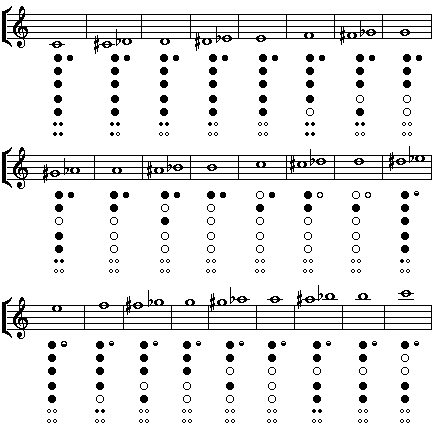Recorder

The recorder is a simple wind instrument. The sound is produced by air vibrating through a tube; various pitches are produced through lengthening or shortening that tube by covering holes with your fingers. Therefore, a specific configuration of covered holes will produce a given pitch.
Below is a chart that shows how note names on the staff relate to the fingering on a recorder.

When playing the recorder, your left hand covers the top three holes, plus the thumb hole on the back. Your right hand covers the last four holes. On the fingering chart, the thumb hole is shown to the right. You will notice on the last row of the fingering chart that the thumb hole is only halfway covered.
Practice will be required to get your fingers used to going to the right spots, and making sure that you are covering the holes completely. You will also need to adjust your air pressure depending on what notes you play. For lower notes, you will need to blow more softly, and for higher notes you will need to blow a little harder with a narrower air stream.
The pitches on the recorder, as with many wind instruments, are not absolute in their intonation. The player will need to train his or her ear, just as with the voice, to make sure that the note being played is in tune. Intonation is adjusted on the recorder by air pressure and the width of the air stream. In addition, alternate fingerings exist, aside from the ones shown above, to produce the same pitches. A player may choose an alternate fingering to help improve the intonation on his or her specific instrument.